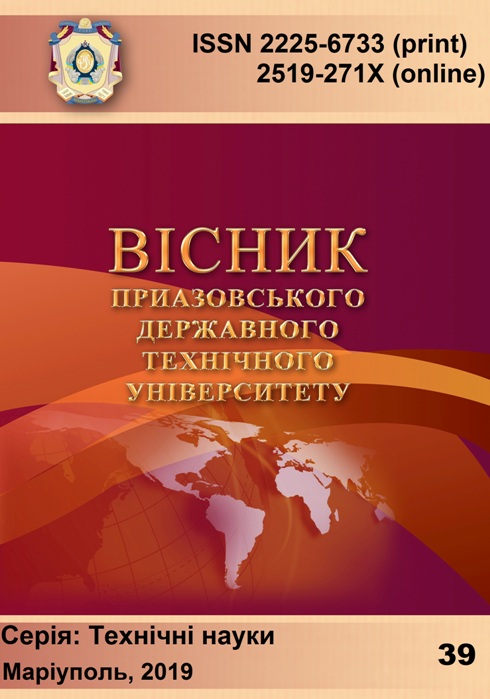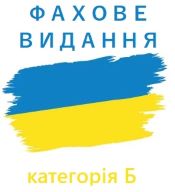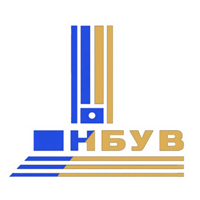До питання про оброблюванність нітридної кераміки м’яким абразивним зерном
DOI:
https://doi.org/10.31498/2225-6733.39.2019.201064Ключові слова:
м’який абразив, нітридна кераміка, видалення матеріалу, керамічна поверхня, абразивне зношування інструменту, різальна кромка інструменту, сферичні мікрочастинки, виривиАнотація
Розвиток сучасного машинобудування пов’язаний з розробкою і впровадженням нових матеріалів і прогресивних технологічних процесів їх обробки. Унікальні властивості кераміки дозволяють використовувати її в різних областях техніки, в тому числі в якості різального інструменту та деталей машин, приладів, радіоелектронної апаратури. Через високу твердість матеріалу механічна обробка перелічених заготовок можлива лише з використанням синтетичного алмазу, але синтетичні алмази досить дорогі, тому необхідно вирішувати проблему заміни дорогих матеріалів на більш дешеви. У статті зроблена спроба розкрити можливість обробки м’яким абразивом нітридної кераміки, яка є набагато твердішою за абразив. Зроблено припущення про те, що м’який абразив у процесі зносу не припиняє роботу по видаленню матеріалу з керамічної поверхні. Доведено графічно та математично, що знімання матеріалу не припиняєтьсяПосилання
Перелік використаних джерел (ДСТУ):
Рогов В.А. Сравнительный анализ механической обработки сверхтвёрдых материалов шлифованием / В.А. Рогов, М.И. Шкарупа // Технология машиностроения. – 2009. – № 5. – С. 12-16.
Лебедев В.А. Модель производительности виброабразивной отделочно-зачистной обработки / В.А. Лебедев, Е.А. Дьяченко // Вопросы вибрационной технологии : Межвуз. сб. науч. ст. / ДГТУ. – Ростов на Дону. – 2004. – С. 17-20.
Инструменты из сверхтвердых материалов / Под ред. Н.В. Новикова, С. А. Клименко. – М. : Машиностроение, 2014. – 608 с.
References:
Rogov V.A., Shkarup M.I. Sravnitel’nyy analiz mekhanicheskoy obrabotki sverkhtvordykh materialov shlifovaniyem [Comparative analysis of the machining of superhard materials by grinding]. Tekhnologiia mashinostroeniia – Engineering Technology, 2009, no. 5, pp. 12-16. (Rus.)
Lebedev V.A., Dyachenko E.A. Model’ proizvoditel’nosti vibroabrazivnoy otdelochno-zachistnoy obrabotki [Vibroabrasive finishing-stripping performance model]. Voprosy vibratsionnoi tekhnologii – Vibration Technology Issues, 2004, pp. 17-20. (Rus.)
Ed. by Novikov N.V., Klimenko S.A. Instrumenty iz sverkhtverdykh materialov [Tools made of superhard materials]. Moscow, Mashinostroyeniye Publ., 2014. 608 p. (Rus.)
##submission.downloads##
Як цитувати
Номер
Розділ
Ліцензія
Журнал "Вісник Приазовського державного технічного університету. Серія: Технічні науки" видається під ліцензією СС-BY (Ліцензія «Із зазначенням авторства»).
Дана ліцензія дозволяє поширювати, редагувати, поправляти і брати твір за основу для похідних навіть на комерційній основі із зазначенням авторства. Це найзручніша з усіх пропонованих ліцензій. Рекомендується для максимального поширення і використання неліцензійних матеріалів.
Автори, які публікуються в цьому журналі, погоджуються з наступними умовами:
1. Автори залишають за собою право на авторство своєї роботи та передають журналу право першої публікації цієї роботи на умовах ліцензії Creative Commons Attribution License, яка дозволяє іншим особам вільно розповсюджувати опубліковану роботу з обов'язковим посиланням на авторів оригінальної роботи та першу публікацію роботи в цьому журналі.
2. Автори мають право укладати самостійні додаткові угоди, які стосуються неексклюзивного поширення роботи в тому вигляді, в якому вона була опублікована цим журналом (наприклад, розміщувати роботу в електронному сховищі установи або публікувати у складі монографії), за умови збереження посилання на першу публікацію роботи в цьому журналі.









